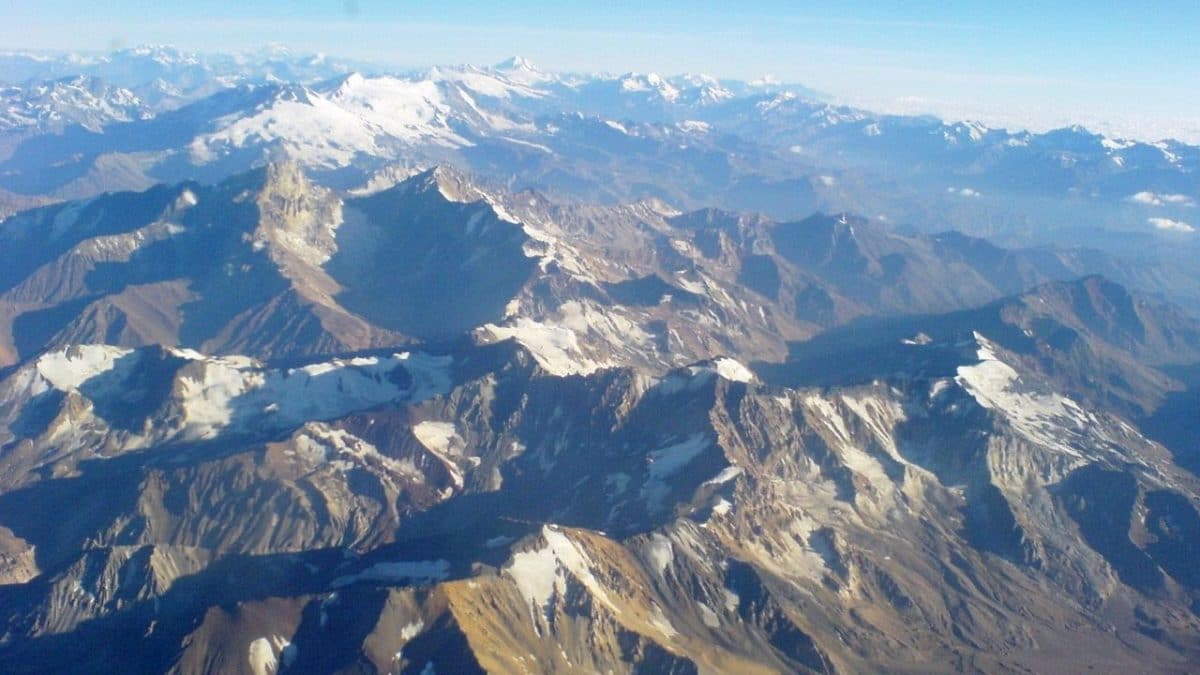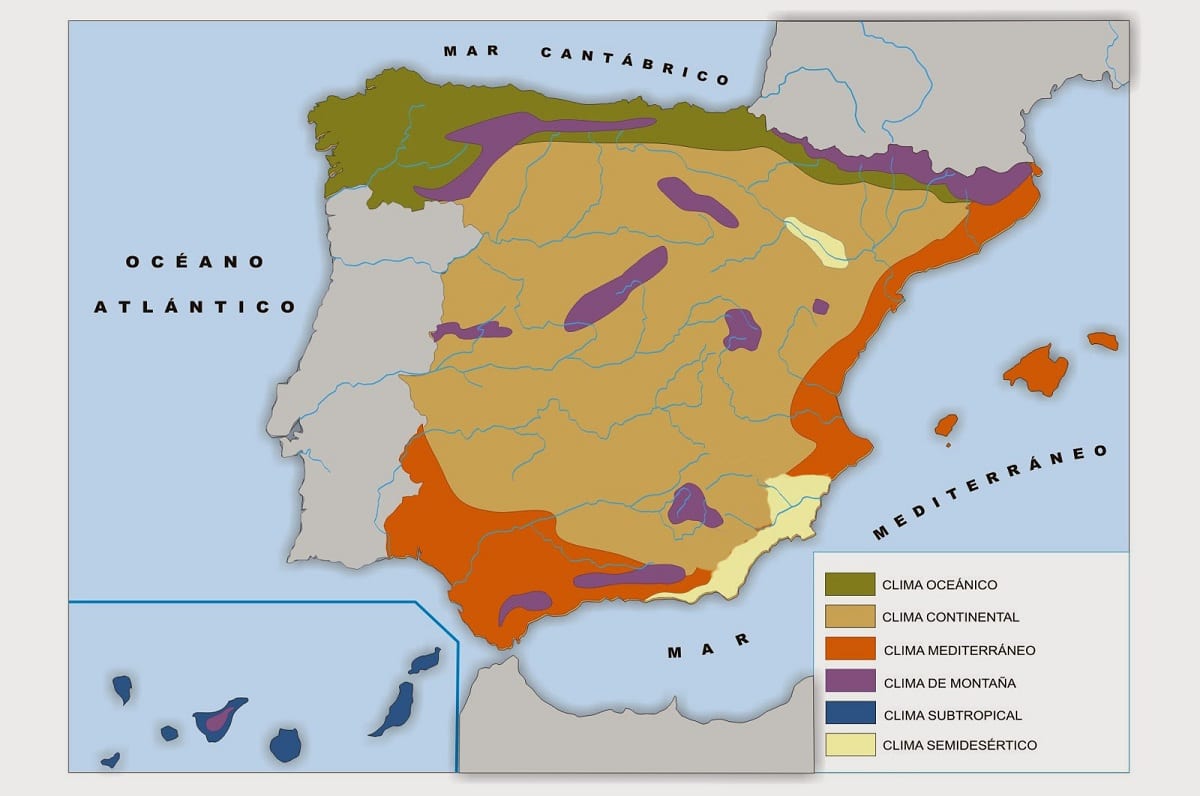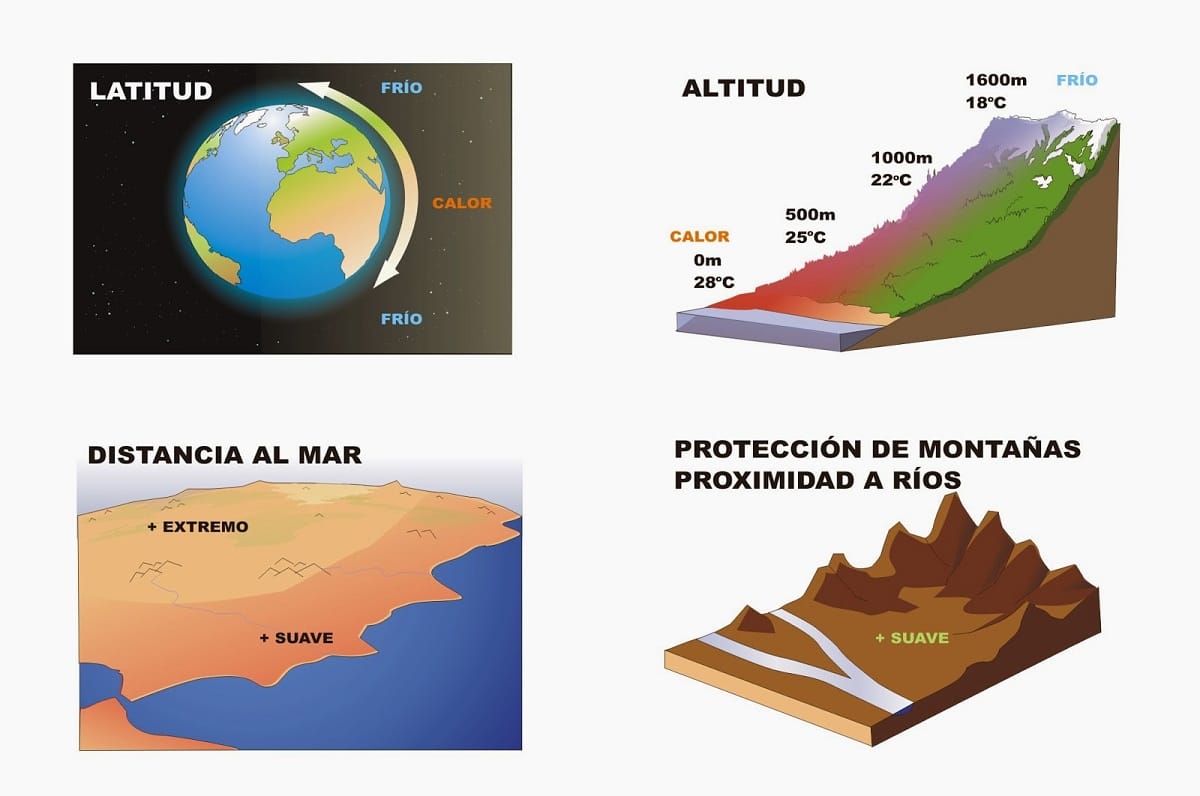
Both in our day to day and in the different media, we talk about the climate and the weather. Many people confuse these concepts and do not know exactly what the differences between weather and climate.
For this reason, we are going to dedicate this article to telling you what are the main differences between weather and climate that exist and the characteristics of each of them.
Differences between weather and climate

Although their concepts are close, the terms weather and climate cannot be used interchangeably. There is a fundamental difference that separates and differentiates them: the time horizons.
When we talk about climate, we refer to atmospheric conditions such as temperature, humidity or pressure in a certain area and for a relatively short period of time. That is, when we see weather forecasts, they are talking about the weather, not the climate.
The weather, on the other hand, refers to all these same atmospheric values, but averaged over a long period of time in one area. That is why, when it comes to climate change, for example, it takes into account records and data collected over the years.
As we said, we can define climate as long-term weather statistics, normally 30 years. To measure the weather, we need to look at changes in its elements, which we list below. The climate system of a given area is determined by its five components. The components of climate are:
- Atmosphere
- Hydrosphere
- Cryosphere
- Lithosphere
- Biosphere
The climate is also affected by its various factors, such as topography or vegetation.
Weather elements

There are five elements that make up the climate:
- Atmospheric temperature: As the name implies, it is how hot or cold the air is at a given time and at a given time. This is mainly influenced by solar radiation, which will make it higher or lower depending on the planet and the geography. Atmospheric temperature and precipitation are the two most important elements of climate.
- Precipitation: Includes any form of water from clouds in the atmosphere that falls to the Earth's surface. Rain, snow, and hail are forms of precipitation.
- Atmospheric pressure: It is the weight exerted by the mass of air in all directions. The higher the altitude, the less this weight will be because there is less air above us. Temperature also causes air to expand and lose density, so as with altitude, the higher the temperature, the lower the pressure.
- Wind: It is the movement of air through the atmosphere.
- Humidity: Finally, one of the elements of climate is atmospheric humidity, which is the amount of water in the atmosphere in the form of vapour.
- Water evaporation: The physical process by which water changes from a liquid to a gas.
- Cloud Cover: It is about the clouds and the amount of these clouds in the atmosphere.
Factors that mark the differences between weather and climate

There are 6 main climatic factors:
- Latitude: is the angular distance between a given point and the Earth's equator. This affects the angle of incidence of solar radiation, which affects the intensity of heating in the area and the length of day and night.
- Altitude: is the vertical distance between a specific point and sea level. This has a huge impact on climate, as higher altitude always means lower temperatures and lower pressures. The thermal floor is given by the altitude.
- Distance from the sea: This is important due to the influence of large bodies of water and their ability to retain heat longer than continental surfaces. Regions farther from the ocean have higher thermal amplitudes because they do not have the smoothing effect of the ocean.
- Ocean Currents: They carry large amounts of water from more or less warm places, so they act as pipes or parts of a radiator or refrigerator.
- Topographic Orientation: Mark whether an area is sunny or shady and how much it receives the sun's rays.
- Direction of planetary winds and seasonal winds: When we talk about climatic factors, we mention the wind, which has a similar function to ocean currents, moving large amounts of air, with different temperatures and storms or other influences.
what is weather
Weather refers to the state of all these atmospheric factors in a given place and time. We will see that when we mention if it is going to rain tomorrow or if it is going to be sunny or if it was very cold last week. So that's what we see in weather forecasts or weather forecasts.
Time has been studied in depth since time immemorial, precisely because the better we know it, the more precisely we know the climate and, therefore, the more tools we have to predict it. Being able to predict the weather has always been very important to humans. From your most basic agricultural application, to the preparation of a plan, trip or event.
Meteorological instruments to measure the weather
To complete our understanding of the difference between climate and weather, we just need to say a little more about the latter. It is also important to know about meteorological instruments that measure time and make weather or meteorological forecasts:
- Thermometer: It allows to measure the atmospheric temperature of a place at a certain time. This is how the maximum, average and minimum temperatures of an area are known.
- Barometer: Measure atmospheric pressure.
- Anemometer: Measure the wind speed.
- Pluviometer: It measures precipitation, hail and snowfall.
- Vane: It helps us to know the direction of the wind.
climatic variability
Weather and climate are terms used interchangeably to communicate the current or current state of the atmosphere on a scale of hours to days. As mentioned above, while (meteorological) weather refers to the current state of the atmosphere, climate refers to changes over three decades or more.
Climate variability refers to changes in the mean state of climate and other statistics on all temporal and spatial scales, beyond individual weather events, occurring on different time-to-climate scales.
I hope that with this information you can learn more about the differences between weather and climate.